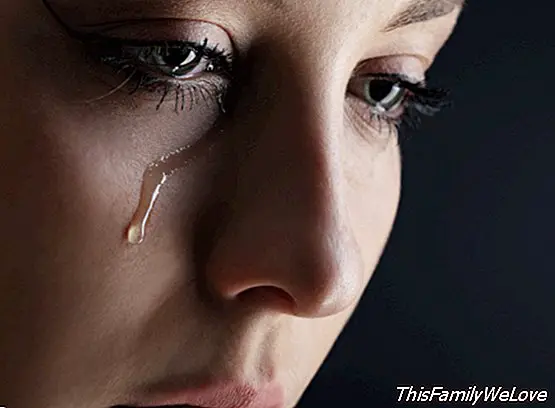The role of tears, is it good to cry?
The tears they are the universal expression of sadness, we cry when we are sad, as if through tears we let out all the discomfort that we have inside. Sadness is one of the basic emotions, and as such it fulfills an adaptive function. In the same way that laughter is the externalization of joy, tears are the maximum expression of the feeling of sadness. But, Is it good to cry? What is the role of tears?
The tears, the outburst of sadness
Sadness is an emotion framed in the group of negative emotions. It is an emotion that is characterized by inactivity, apathy, apathy and disinterest, etc. and that generates discomfort. Sadness is triggered by an adverse situation, a situation that usually involves some kind of loss. Being the loss that makes us feel sorry, and generates discomfort.
Tears are the expression of sadness, We cry when we feel sad. Crying is as natural as sadness, we have all cried on occasion, we have all sobbed at the loss. And that crying at the saddest time comforts us, calms us down. Like a hug, the tears become a burst of sadness and at the same time a balm of consolation.
Sadness also has its function

What is the use of sadness? What is the function of that emotion? Nobody likes to be sad because sadness causes discomfort and is unpleasant. But sadness has a function, sadness helps us to recover from the loss, to face it and emerge strengthened from it. The sadness leads us to reflection, to analyze the situation and give it a meaning and in turn, through sadness we can make others see that something has hurt us.
Sadness, therefore, serves us:
1. To understand and deal with the loss, the pain through reflection.
2. To show others that we have suffered harm and in this way to be able to receive a support that is essential for emotional healing.
The role of tears, is it good to cry?
Of course. Tears are the consequence of this whole process. Tears, which cause crying, appear associated with intense emotional states. Physiologically, tears serve to cleanse and moisten the eye, but why do we cry when we are sad? The tears and the sob that provokes them seem to fulfill the functions associated with sadness.
When we cry all our body and physiological functions intervene, it is not a mechanism only eye, as it happens when the eye is cleaned. When we sob our body is allowed to be carried by the sob, Tears appear, the heart beats faster, the body shudders, the temperature increases, etc. And we go further, when we finish crying, we feel more calm, and somehow consoled.
It seems that tears help us to:
1. Let out sadness in a burst of pain that in turn comforts us. Different studies show that crying causes changes in people who cry. Crying has a cathartic effect that gives us relief and serves to relieve us.
2. Communicate our emotional state.When we cry we are telling others that we are sad. This communication is very important, since it allows us to obtain support, comfort and understanding. All people when they see someone cry, when they see sadness they experience compassion.
Celia Rodríguez Ruiz. Clinical health psychologist. Specialist in pedagogy and child and youth psychology. Director of Educa and Learn. Author of the collection Stimulate Reading and Writing Processes.
It may interest you:
- Sadness, what to do when we are sad?
- Sadness or dysthymia: how to identify chronic sadness
- Sadness and melancholy: antidotes against the 'slump'
- How to make negative thoughts disappear




